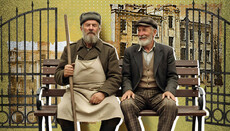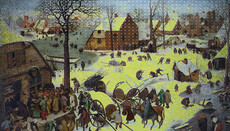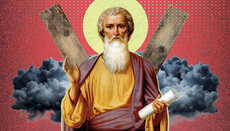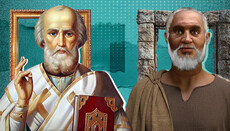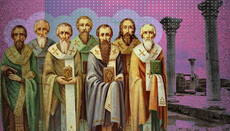IV Ecumenical Council: Pope Leo, Monophysites, Chalcedonites and their ilk
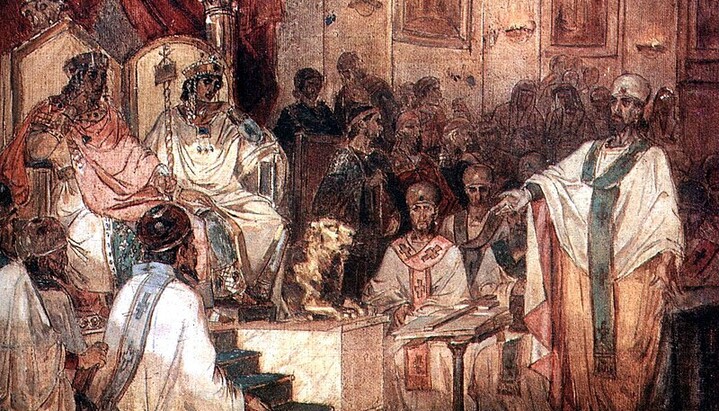
The Chalcedon Council of 451 proclaimed the formula for the union of the Divine and human nature of Christ, establishing Orthodoxy and causing a split of the Church.
Theological background of the Council
"For it is written, 'I will destroy the wisdom of the wise; the intelligence of the intelligent I will frustrate. Where is the wise person? Where is the teacher of the law? Where is the philosopher of this age? Has not God made foolish the wisdom of the world?'” (1 Cor 1:19,20).
Despite the words of the Apostle Paul about the rejection of human wisdom, the sages of this world have not gone anywhere and still try to understand and explain the Mystery of the Incarnation with their minds. Verbalizing divine truths incomprehensible to the mind in narrow forms, on the one hand, exceeds the capabilities of the human mind, and on the other hand, is the urgent need to separate truth from lies, to save faith from pernicious heresies.
Trying to understand and verbally express the Sacrament of the Incarnation, to explain rationally how the Infinite God, the Creator of all things, became a Man like us in everything except sin, Eastern theology developed three heretical approaches and one Orthodox, which was adopted at the Council of Chalcedon, but which to this day is rejected by millions of Christians worldwide.
The first heresy, called Apollinarianism, argued that the unity of the hypostasis in Christ is achieved by combining two incomplete natures, that Christ did not take on human nature in its entirety, but only partially.
The second heresy, Nestorianism, asserted that two natures are so complete and so different in Christ that this difference extends to the difference between two hypostases, that in Christ God and man, each with his own self-consciousness, exist as if in parallel, blending in an imaginary way, apparently, rather than essentially.
Finally, the third heresy, later called Monophysitism, claimed that there is one hypostasis, two natures in Christ, but that human nature, as immeasurably weaker, is absorbed by Divine nature, that humanity in Christ was transformed and deified until its complete dissolution and disappearance to the point of only a visible illusory shell.
Apollinarianism was rejected at the Second Ecumenical Council, Nestorianism – at the Third. The turn of the Monophysite heresy has come, but the fight against it turned out to be so difficult that it has not yet ended, by and large. The reason for this is not in the political confrontation of the parties, which took one side or another for the religious justification of their struggle, and not even in the liberation movement of the imperial provinces, which raised Monophysitism to their banners as a religion different from imperial Orthodoxy.
The deep reason for the persistence of Monophysitism lies in the fact that in striving for God through ascetic work, one can very easily reach the denial of the value of humanity as such, to the recognition of any human manifestations as sinful.
Looking ahead, let us say that Egyptian monasticism became the stronghold of Monophysitism and was perplexed by the following: how can Christ have a full-fledged and not eventually disappeared human nature, the nature that the monks mortify in their ascetic aspiration to God?
Having reached the extreme asceticism, it is very easy to understand the words of the Apostle Paul “…Put to death, therefore, whatever belongs to your earthly nature…” (Col. 3:5) in isolation from their further explanation: “sexual immorality, impurity, lust, evil desires and greed, which is idolatry” (Col. 3:5).
In the end, Monophysitism grows from a dualistic picture of the world, which is firmly ingrained in the consciousness and subconsciousness of a huge part of humanity, and according to which everything material and human is recognized as hostile to the spiritual and Divine. In this regard, we can also recall Plato saying that the body is the prison of the soul, from which the soul must be freed.
Events leading up to the Council
The religious truce after the Third Ecumenical Council of 431 was established by the Conciliatory Confession of 433, which was accepted by both the Alexandrian party, led by Cyril of Alexandria, and the Antiochian party, led by John of Antioch. However, this peace was very fragile. The Alexandrians for the most part remained adherents of Cyril's theology, which in its further development laid the groundwork for Monophysitism.
Cyril himself restrained the radicalism of his flock for the sake of church peace, but in 444 he died. Three years earlier, John of Antioch also died. After Cyril, the See of Alexandria was occupied by Dioscorus that inherited from his predecessors, Theophilus and Cyril, who ruled in Alexandria for a total of 60 years, an uncompromising struggle with the See of Constantinople.
Canon II of the Ecumenical Council, which gave the Archbishop of Constantinople the second place in the diptych after the Pope, was not recognized for a long time both in Rome and in Alexandria, in the latter resented much more, since Alexandria was the see that used to occupy the second place before Constantinople.
The bishops of Alexandria, as well as the Roman bishops, who assumed the title of pope, considered it their duty to defend the prestige of the see with all available means. They spent huge amounts of money on this confrontation, driving the Church of Alexandria into large debts.
At this time, Flavian, a man of moderate views, was archbishop of Constantinople, leaning more towards the theology of Antioch than to that of Alexandria. This circumstance made him even more unpleasant in the eyes of Dioscorus.
The Byzantine political alignments at that time were as follows: Emperor Theodosius II was in a quarrel with his wife Eudokia, who for this reason lived in Jerusalem, the emperor’s sister, Pulcheria, Orthodox and pious, who had previously actively participated in church affairs, was also in disgrace. The emperor was greattly influenced by Chrysanphius, the chief chamberlain, who, in turn, was under considerable influence of his godfather, the monk Eutychius, who was believed the main authority among Constantinople monastics.
Everything would be fine if it were not for the fact that Eutychius was an advanced Monophysite, who not only placed the “12 anathematisms” of Cyril of Alexandria above all Ecumenical Councils, but also categorically denied the consubstantial Christ to our humanity. Naturally, he became the main hope and support for Dioscorus in the fight against the See of Constantinople. In addition, Dioscorus relied on the monophysite-conscious "lower classes" of the Alexandrian See, whose radicalism he could no longer restrain, like his predecessor Cyril.
Theological treatises began to appear, denouncing Eutychius and his teachings. Thus, St. Theodoret of Cyrrhus published a work entitled "Eranist", in which, however, he did not name the main heresiarchs by name, but denounced the heresy itself in great detail. In response, Eutychius, through the powerful Chrysanphius, lobbied for Theodosius to issue an imperial rescript on the faith.
This document is a blatant interference of secular power in the church affairs. Judge for yourself: the emperor, without any participation of the church hierarchy, simply by his sole order, condemned all the creeds, except for the oros of the First Ecumenical Council in Nicaea, the oros of the III Ecumenical Council in Ephesus and "12 anathematisms" of Cyril of Alexandria. All other teachings, including the Conciliatory Confession of 433 was banned, and repressions began against their supporters.
In particular, the emperor, without any participation of the hierarchy, deposed Bishop Irenaeus of Tyre, ordering him to put on a “layman dress”.
In addition, Eutychius began to send letters, including to the Pope, with the absurd thesis that Nestorianism was being revived in the East. Scandal!
In 448, Flavian of Constantinople was compelled to convene a council of bishops who, for one reason or another, were in the capital, to consider the accusations against Eutychius. An interesting fact: Eutychius refused to attend the council, citing a vow to "stay in seclusion as if in a coffin." However, soon, having gathered an escort from a crowd of monks, an armed police detachment and a certain high dignitary Florentius, Eutychius forgot about his vow and appeared at the council.
His heresy was so obvious that even Florentius urged him to renounce it. Eutychius persisted, for which he was accused of apollinarism (which is somewhat strange) and was defrocked.
The answer to this was the decree of Emperor Theodosius II of March 30, 449 on the convening of an ecumenical council in Ephesus on August 1, 449. The purpose of the council was also indicated in the decree – to uproot Nestorianism. This absurd goal disguised another one – to justify Eutychius and to establish the theology of Cyril of Alexandria, which had already developed into Monophysitism by his followers.
Pope Leo the Great was also invited to the council, but was unable to attend it, not matter how much he would like to, since Rome was threatened by the Huns led by Attila. Pope Leo sent his legates to the council, handing them letters to the emperor, the council, and Archbishop Flavian of Constantinople.
The last letter is the famous Tomos of Leo, which became the pillar for the decisions of the Council of Chalcedon and, for many, the measure of the Orthodox faith.
In this Tomos, the Pope very precisely, Orthodoxally and clearly outlined his view on the issue of the unity of natures in Christ. Here is one of the provisions of Tomos: “Therefore, by virtue of this unity of the Person, cognizable in both natures, it is said, on the one hand, that the Son of Man descended from heaven, while (actually) the Son of God took on flesh from the Virgin, from whom He was born, and, on the other hand, it can be said that the Son of God was crucified and buried, although He did not undergo crucifixion and burial in the Divinity itself, according to which the Only Begotten is coeval with the Father and Consubstantial, but in the weakness of our nature."
The Tomos of Leo was in tune with the Conciliatory Confession of 433 but contradicted Alexandrian theology.
The Council at Ephesus met by August 449, but its composition was carefully chosen. Most of the participants were on the side of Eutychius and Dioscorus, while the Orthodox bishops and even Flavian of Constantinople were in the status of almost defendants and did not have the right to vote. The chairperson of the council was Dioscorus of Alexandria.
Of the three papal legates, one died on the way, the other, Julius, Bishop of Puteoli, was old and, moreover, did not know the Greek language, while the third, Ilarus, although young, active and well educated, was a deacon, and Dioscorus ordered him to sit with the deacons, thus separating him from Julius of Puteoli. In his turn, Dioscorus himself arrived at the Council with a large retinue of 20 bishops and a crowd of radical monks. When the question of two natures was discussed, this crowd staged a hideous hustle with shouts “Cut in two those dividing Christ into two!”, “Drown all dissenters in the sea!”, “Send Eusebius (Orthodox) to the fire, burn him alive!” and so on.
These threats were by no means harmless. The crowd staged a real massacre, some Orthodox bishops even climbed under the benches to hide from the attackers.
It is not surprising that this council, formally an ecumenical one, was later labeled as "robber", with all its decisions canceled in the end.
At this backdrop, the council of 449 approved the "12 anathematisms" of Cyril and deposed all those who disagreed. Almost all the participants in the council cowardly signed this decision, with the exception of the papal legates, who tried to protest, but to no avail. Emperor Theodosius approved the decisions of the council, and receipts were taken from the bishops that they would no longer raise any new dogmatic issues.
Flavian of Constantinople and some other Orthodox bishops wrote an appeal to Pope Leo. The pope was outraged; he rejected all the decisions of the Robber Council, accused Dioscorus of arbitrariness and demanded that the emperor convene a new council in Italy. Theodosius II replied that the pope was needlessly worried – the peace of the church had been restored, and troublemakers such as Flavian and others had been deposed and sent into exile. Flavian, by the way, soon died, and some said that, among other things, from beatings he suffered at the Robber Council. Dioscorus personally ordained his apokrisarius Anatoly to the See of Constantinople.
The party of Dioscorus and Eutychius triumphed, but this did not last very long. Emperor Theodosius II died suddenly after falling from his horse. He left no heirs, and therefore Pulcheria took all power into her own hands, which began by executing Chrysanphius. She understood that she would not be able to rule the empire on her own and invited Senator Marcian to share power with her by marriage. Moreover, the marriage was initially formal, since Pulcheria put forward the condition that she would preserve her virginity.
A noteworthy fact: Pulcheria proclaimed Marcian emperor, but in order to make this act legitimate, she asked the Archbishop of Constantinople Anatoly to perform a coronation ceremony and anoint Marcian to the kingdom.
This was the first time when the Church took part in the act of sacralization of the imperial power, whereas earlier pagan priests were engaged in this. Further, all the Byzantine emperors were anointed to the kingdom by the patriarchs.
With the change of power, the church situation also changed dramatically, the remains of Flavian were solemnly transferred to Constantinople and buried in the Church of the Twelve Apostles, the deposed bishops returned to their sees, and Eutychius was removed from the capital virtually under arrest. The bishops who participated in the Robber Councill began to write penitential letters to Pope Leo and explain that they were forced to put their signatures under the decisions of the council.
Dioscorus' protege at the See of Constantinople, Anatoly, without any hesitation got to the side of the new government and distanced himself from Dioscorus. He signed the famous Tomos of Leo alongside other bishops.
Nestorius, who was in exile at the time, wrote a letter to the inhabitants of Constantinople, in which he expressed his solidarity with Flavian and Pope Leo, anathematized Eutychius, and criticized some of his followers.
Constantinople started to bother about inviting Nestorius to a new council, which was brewing to replace the Robber one, but Nestorius had died by that time.
The course of the Council of Chalcedon in 451
The council was scheduled by the emperor Marcian for September 1, 451 in Nicaea. Pope Leo tried to protest, believing that it would be enough to resolve all controversial issues if all the eastern bishops signed under his Tomos, but he had to retreat. He sent his legates demanding that one of them, Bishop Paskhazin of Lilibei, chair the council.
By the appointed time, more than 500 bishops gathered in Nicaea (at public expense), but Marcian, busy at that time with a confrontation with the Huns, ordered the council’s venue to be moved closer to the capital. Chalcedon became a new venue of the council, located opposite Constantinople on the other side of the Bosphorus (now it is a district of Istanbul on the Asian side of the city).
The secular authorities, taught by the bitter experience of the hideous Robber Council in 449 and the III Ecumenical Council of 431, which was almost the same, were extremely scary of anarchy and unrest.
To exclude something like this, a presidium consisting of 18 imperial officials and senators was established alongside the chairperson, legate Paskhazin. They were in charge of supervising the running of the Council in strict accordance with the legal procedure.
At the first meeting of the Council on October 8, 451, it was decided to recognize the decisions of the Robber Council of 449 as the ones adopted under the threat of violence and sentence those responsible for this violence to defrock. First of all, this concerned Dioscorus, as well as the entire presidium of the Robber Council. They were no longer present at the next meeting, on October 10, and the fathers of the Council moved on to deliberations on doctrinal issues. At the same time, the papal legates again tried to protest, believing that such discussions were useless, but simply voting for Leo’s Tomos was sufficient. The secular chairpersons objected that it was not necessary to assemble a council for this.
They began to read the Nicene Creed, and then the Constantinople Creed, which had already been formalized by that time. This was the first official manifestation of the Nicene-Tsaregrad symbol of faith, which is still solemnly sung at the Liturgy.
The letters of Cyril of Alexandria to Nestorius and John of Antioch and the Tomos of Pope Leo were also read aloud. The "12 anathematisms" were diplomatically omitted, although demands were made at the Council to read them as well. After that, a break was announced for 5 days, during which a separate meeting was held under the chairmanship of Paskhazin, without secular officials, for a formal ecclesiastical trial of Dioscorus.
At this meeting, a decision was unanimously worded, which gave grounds to the popes of Rome later to declare that the primacy of the pontiff was supposedly always recognized in the East.
The decision reads as follows:
“Therefore, the most holy and blessed Archbishop of great and ancient Rome, Leo, through us and through this holy council, in union with the blessed Apostle Peter, who is the cornerstone of the Catholic Church and the foundation of the Orthodox faith, deprives Dioscorus of his episcopacy and all sacred dignity.”
If the Eastern bishops had understood that this formulation would be cited in centuries by Rome as an example of the subordination of the entire Church to it, they would not have subscribed to it so easily. In fact, they invested in these words a completely different meaning than the Latins, viz. that the bishop of Rome had an unconditional primacy of honor, that at that given moment in history it really acted as a stronghold of Orthodoxy against the background of theological quests and errors of the East, but nothing more.
The next few meetings showed that the Council was faced with an unsolvable problem: the majority of the participants were nevertheless supporters of Alexandrian theology and did not want to give up on the essentially Monophysite formulation “one nature of God the Word incarnate” and “12 anathematisms”.
In turn, the papal legates insisted on accepting the Tomos of Leo, otherwise threatening to leave the council and demand its convocation already in Italy.
However, the "12 anathematisms" were not theologically compatible with Leo's Tomos. No tricks of the chairman-officials to somehow formalize the issue and hold a vote were crowned with success. In this situation, a desperate attempt was nevertheless made to work out a general formula. For this end, a commission was elected, which included, oddly enough, supporters of the most extreme opinions: all three papal legates and firm "Cyrillovites": Fallasius of Caesarea-Cappadocia, Eusebius of Ancyra and Atticus of Nikopol. The commission met in the chapel of the Holy Great Martyr Euthymia the All-Praised, where access was denied to other participants in the council.
By some miracle, they wrote the text, against which no one could find objections. The text reads as follows:
“Therefore, following the divine fathers, we all unanimously teach to confess the One Son, our Lord Jesus Christ, Perfect in Divinity and Perfect in humanity; Truly God and truly man Himself: from a rational soul and body. Consubstantial with the Father in Divinity and Himself consubstantial with us in humanity. Like us in every way except sin. Before the ages, born of the Father according to Divinity, but in the last days of Himself for us and for our salvation (born) as a human from Mary the Virgin Theotokos. One and the same Christ, the Son, the Lord, the Only Begotten, cognizable in two natures, unmerged, untransformed, inseparable. (At the same time) the difference of natures does not disappear through union, but the peculiarity of each nature, converging into one Person and one Hypostasis, is even more preserved. (We teach to confess Him) not divided or distinguished into two persons, but as the One and the Same Son and the Only Begotten, God the Word, the Lord Jesus Christ. As from the beginning the prophets (spoke) about Him and the Lord Jesus Christ Himself instructed us, and as He gave us the symbol of our fathers.”
When this text was read in front of the entire Council, there were exclamations: “This is the faith of the fathers! We all believe like that! Let the metropolitans sign it right away, and that’s it!” However, the formal vote was postponed until the next meeting, which was already held in a solemn atmosphere in the presence of the imperial couple.
At the meetings that followed on October 26, 27 and 28, 451, issues of an administrative, disciplinary and personal nature were decided. Number one among them was the issue of endowing the See of Constantinople with its own canonical territory, which until then was confined only to the capital.
The solution to the issue was formalized by Canon 28 of the Council. It reads as follows:
“Following in every detail all the decrees of the holy Fathers and knowing about the canon, just read, of the one hundred and fifty bishops dearly beloved of God, gathered together under Theodosius the Great, emperor of pious memory in the imperial city of Constantinople, New Rome, we ourselves have also decreed and voted the same things about the prerogatives of the very holy Church of this same Constantinople, New Rome. The Fathers in fact have correctly attributed the prerogatives (which belong) to the see of the most ancient Rome because it was the imperial city. And thus moved by the same reasoning, the one hundred and fifty bishops beloved of God have accorded equal prerogatives to the very holy see of New Rome, justly considering that the city that is honored by the imperial power and the senate and enjoying (within the civil order) the prerogatives equal to those of Rome, the most ancient imperial city, ought to be as elevated as Old Rome in the affairs of the Church, being in the second place after it. Consequently, the metropolitans and they alone of the dioceses of Pontus, Asia and Thrace, as well as the bishops among the barbarians of the aforementioned dioceses, are to be ordained by the previously mentioned very holy see of the very holy Church of Constantinople; that is, each metropolitan of the above-mentioned dioceses is to ordain the bishops of the province along with the fellow bishops of that province as has been provided for in the divine canons. As for the metropolitans of the previously mentioned dioceses, they are to be ordained, as has already been said, by the archbishop of Constantinople, after harmonious elections have taken place according to custom and after the archbishop has been notified.”
This Rule was categorically rejected by Pope Leo and was not recognized by the Roman Church for almost a millennium and a half. Today, for some reason, it is cited by representatives of the Patriarchate of Constantinople to justify their claims to the exclusive primacy of the Patriarch of Constantinople in the Orthodox world.
Monophysitism after the Council
The decisions of the Council of Chalcedon were adopted by the episcopate, but not by the church people, who for the most part were guided by the provisions of Alexandrian theology, according to which the presence of two natures inevitably led to two hypostases, and hence to the revival of Nestorianism.
In 452, both emperors, Marcian of the East and Valentinian III of the West, issued a joint edict, according to which everyone was to abide by the decisions of the Council of Chalcedon and refrain from further disputes. This edict caused serious disturbances in Palestine, Egypt and Antioch, which had to be pacified mainly by military force.
The Church was actually divided into Monophysites and Chalcedonites. At the same time, the Chalcedonian faith among many non-Greek peoples was associated with the empire, whose power they were burdened with, and Greek culture, to which they opposed their national culture. Therefore, various national liberation or separatist movements often raised Monophysitism to their banners, as a faith different from imperial Chalcedonism.
Therefore, faith once again became a hostage to the successes or defeats of political parties or state formations in their struggle with each other.
The imperial authorities eventually realized that attempts to impose the Chalcedonian faith by force were not successful and began to try to reconcile the parties. Thus, in 482, Emperor Zeno issued the so-called Enotikon, whereby he affirmed the authority of the first three Ecumenical Councils, anathematized Nestorius and Eutychius, approved the “12 anathematisms” and proclaimed that “The only Begotten Son of God and our Lord Jesus Christ, truly incarnated, consubstantial with the Father in divinity and consubstantial with us in humanity, descended and incarnated from Mary the Virgin Theotokos, is One, but not two.” Both Monophysites and Chalcedonites could subscribe to this formula, for it did not say anything about hypostases, natures, and the manner of their combination. But despite this, Enotikon did not serve to reunification, but to further division.
In fact, this document renounced the Council of Chalcedon and the Tomos of Leo. This could be subtracted from another quote from the Enotikon: "We anathematize anyone who thinks differently now or at any time, in Chalcedon or at any other council." This was one of the reasons for the 35-year separation of the Roman and Constantinople Churches, when Pope Felix and Patriarch Akaki crossed out each other from the diptychs.
Today, to one degree or another, Monophysitism is professed by the Coptic Orthodox Church, the Armenian Apostolic Church, the Ethiopian (Abyssinian) Orthodox Church, the Eritrean Orthodox Church, the Syrian Jacobite Church, the Malankara Orthodox Syrian Church, which have tens of millions of believers.
Modern attempts to come to some common understanding of the dogmas with the above Churches within the framework of theological dialogues have not yet been successful.
Conclusions
The image of the union of the Divine and human nature in Christ has not only theological significance, but also affects the life of every Christian and even entire civilizations. There is a saying: "As your God is, so shall you be." If, as the Monophysites assert, the Divinity has swallowed up humanity in Christ, if humanity has dissolved in the Divinity or has diminished to the point of being practically imperceptible, then the life of a person, his or her spiritual feat will be aimed at suppressing the human in himself or herself for the sake of aspiration to Heaven. This is the path to extreme asceticism and harmful mysticism.
If, as the Orthodox say, the Divinity and humanity are “indissoluble, untransformed, inseparable” in Christ, then everything human, material, and cultural receives its proper value, it is not rejected or diminished, but strives for transfiguration and spiritualization.
As a result, the Church participates in earthly history, sometimes in political processes; She seeks to influence society, both ecclesiastical and non-ecclesiastical; She creates culture and responds to ongoing events; She tries to transfigure and spiritualize Her earthly environment, although it turns out this is not always possible. At the same time, the Church is aware of Herself as the Body of Christ, as “not of this world,” and in this awareness leads Her faithful children to the Kingdom of Heaven.
